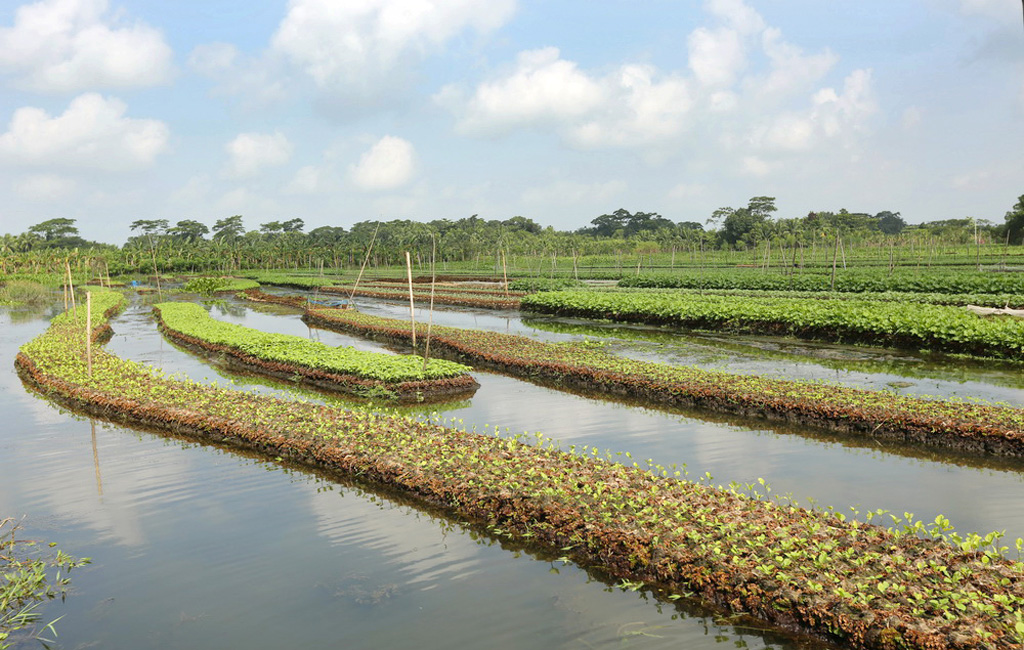Bangladesh’s floating gardens – a global farming heritage

Dhaka, 22 June, 2020: These pictures of floating gardens shot in Barisal’s Banaripara is a testament that how farmers in Bangladesh, through various adaptive and coping mechanisms, are staying productive and facing the challenges of climate change effectively
Farmers in some parts of Bangladesh have developed floating gardens in which plants can be grown on the water on floating organic beds of water hyacinth, algae and other plant residues. This environmentally friendly traditional cultivation technique utilizes the natural resources of wetlands to grow vegetables and other crops almost all year round, providing numerous social, economic, agricultural, and ecological benefits to the local communities.
These pictures of floating gardens shot in Barisal’s Banaripara is a testament that how farmers in Bangladesh, through various adaptive and coping mechanisms, are staying productive and facing the challenges of climate change effectively. Banaripara municipal area stands on the River Shandhya while the entire upazila is crisscrossed by many rivers. As land gets scarce at many places, ingenious farmers grow their seedbeds and plants on floating gardens. Hydroponics system in Bangladesh, based on floating gardens, got recognition in December 2014 by the United Nations' Food and Agricultural Organisation (FAO) as a Globally Important Agricultural Heritage System (GIAHS) for innovation, sustainability, and adaptability.
The landscape with colourful diversified floating gardens has a unique aesthetic view. Farmers badly in need of more cultivable land find ponds, water bodies, and tributaries as an alternative for developing floating gardens and generating income through vegetable and other crop cultivations.
In the Asia-Pacific region, currently there are 36 sites in 7 countries (1 site in Bangladesh, 15 sites in China, 3 sites in India, 11 sites in Japan, 1 site in Philippines and 4 sites in Republic of Korea, and 1 site in Sri Lanka), which are designated as GIAHS. Globally Important Agricultural Heritage Systems are outstanding landscapes of aesthetic beauty that combine agricultural biodiversity, resilient ecosystems and a valuable cultural heritage. Located in specific sites around the world, they sustainably provide multiple goods and services, food and livelihood security for millions of small-scale farmers.
According to UN FAO, these agricultural systems are threatened by many factors including climate change and increased competition for natural resources. They are also dealing with migration due to low economic viability, which has resulted in traditional farming practices being abandoned, and endemic species and breeds being lost. These ancestral agricultural systems constitute the foundation for contemporary and future agricultural innovations and technologies. Their cultural, ecological and agricultural diversity is still evident in many parts of the world, maintained as unique systems of farming.

